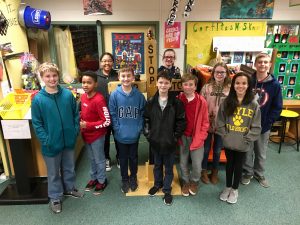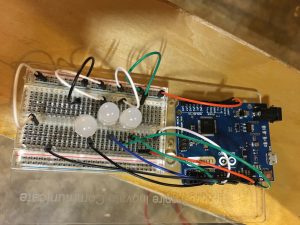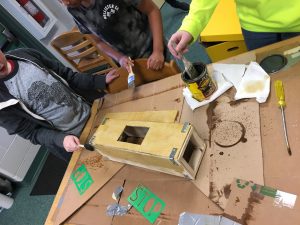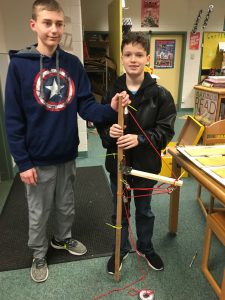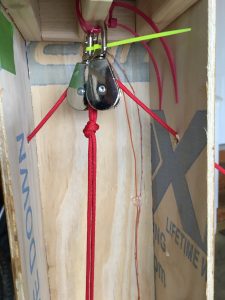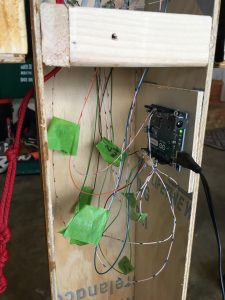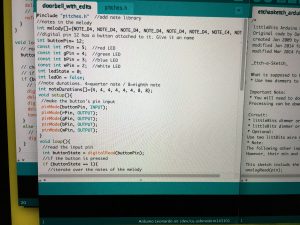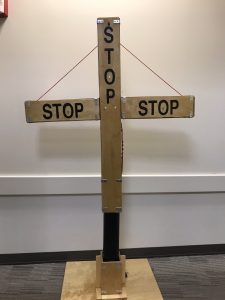By Nathan Sekinger, Gayle Middle School, and Darcie Caswell, Central Rappahannock Regional Library.
To recognize early contributions of African American inventors in the areas of science, technology, engineering, and math, Central Rappahannock Regional Library is rotating a series of interactive activities through the children’s areas of all branches through the end of February. As part of this rotation, a model traffic signal will rotate through several CRRL branches, allowing elementary school-aged children to see and work with a model Traffic Signal based on Garrett Morgan’s 1923 patent. This model is a result of a tremendous partnership between CRRL and our public schools.
CRRL’s African American Inventors Activity allows children in grades K-6 to interact with recreations or simulations of inventions of the late 19th and early 20th centuries. When CRRL Youth Services asked Nathan Sekinger’s “Invention Lab” students at Gayle Middle School if they could create a model of an automatic Traffic Signal based on a 1923 patent, we had no idea the amazing product they would create. In “Invention Lab,” students had been working to recreate famous inventions, such as the Gutenberg printing press, using 3D designed stamps, and human flight, using the aerodynamics of paper airplanes. CRRL’s request regarding the Traffic Signal fit right into their curriculum, and their final project this year was to reimagine a working Traffic Signal, based on the 1923 patent of Garrett Morgan, as provided by CRRL.
The students examined the patent design and spent a week sketching their thoughts, understanding the design, and considering what they would need to rebuild it. The first few considerations involved how to make a practical working model using the resources and knowledge they possessed. Morgan likely had access to a metal shop to build and design his geared apparatus that used a hand crank to move the arms of his signal. GMS students didn’t have that, but they did have access to tools Garrett didn’t, like 3D printers and micro-computers.
GMS students determined that they wanted the signal to work by having some method to raise and lower the arms of the signal. They also decided that it should be illuminated and make some kind of signal sound, both of which are mentioned as potential options in the Morgan patent. As Morgan designed it, the signal was intended to stop traffic going in one direction, while letting it go in another. The arms of the signal can also be raised by an operator to signify to stopped traffic that they could now go. The students made a 3D model of the design and started to plan out what it would do and how it would look.
The first decisions led to using pulleys and rope for the motion of the arms. This would still make it controllable by a person directing traffic, like the Morgan model. As for lights and sounds, they decided to program and wire a micro-computer (Arduino) to control those functions. When the arms are raised with the pulley, they trigger a switch that sets off a series of flashing lights and signal sounds. This is meant to represent the “Go” effect for drivers using the signal.
Once the students had those decisions made, it was time to plan the build. They wanted it to look somewhat authentic to the 1920s, so they chose a wooden box with a metal post design. By using painted PVC, to look like metal, and a hollow box, stained to look antique, they were able to hide the mechanics of the design, just as Morgan did.
As the construction continued, the students also needed to consider the mechanics of the pulleys, so they created a model.
Finally, they were ready to put all the pieces together and test their creation.
CRRL staff were amazed at the creativity and design process used by the “Invention Lab” students at GMS. The stoplight and the partnership between CRRL and Mr. Sekinger’s students is a huge success!

